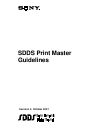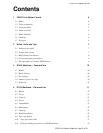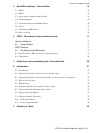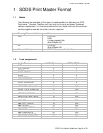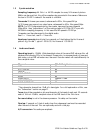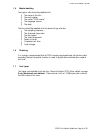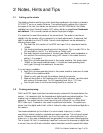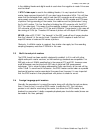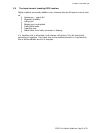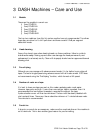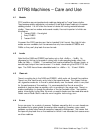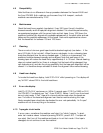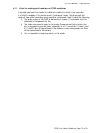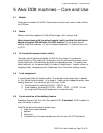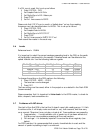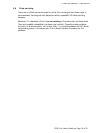2 Notes, Hints and T ips
SDDS Print Master Guidelines, Page 7 of 26
2 Notes, Hints and Tips
2.1
Setting up t he st udio
T he dubbing theatr e moni tor i ng s ys tem s hould be equalised to the indus tr y standard
ISO-2969 “X” cur ve, as used i n cinemas. T he method us ed to achieve thi s is beyond
the s cope of this text, but details can be found i n the DF P- 3000 Quick Start Guide,
available fr om S ony Cinema Pr oducts (SCP) office, details on page Error! Bookmar k
not defined.. T his is usually carried out before the pr oj ect is begun.
It is important to r ecord the mas ter at the correct level. The audi o is transferred
digitally into the camer a, with no oppor tuni ty for level adjustments. A r efer ence “tes t
tape” is available fr om the S CP office. Correct studio alignment can be achieved by
following thes e s teps :
§
Play back the 1kHz section of the S DDS test tape. This is recorded at exactly
-20dBfs.
§
T his should r ead hous e oper ati ng l evel at the cons ol e. This is usually 0VU in the
USA and 0dB u in the UK. It is also known as “Dolby Level”.
§
Play back the pink noise s ecti on of the tes t tape. Monitor each loudspeaker in
turn and s et the moni tor i ng l evel s using a S PL meter to the val ues shown in
section 1.4 on page 5.
§
Send 1kHz at house oper ati ng level to the mas ter machine. This should r ead
-20dBfs on the r ecor d machine meter s . It should als o r ead oper ati ng level
(unity gain) through the machi ne at the cons ol e.
If no tes t tape i s available:
§
Send 1kHz at house oper ati ng level to the mas ter machine, make s ur e i t reads
–20dBfs at the machine meter s .
§
Check for unity gain through the machine, back at the cons ol e.
§
Measure the output of this machine with a tr ue R MS voltmeter, and then send
pink noise at the s ame l evel. For 0VU operating level this is 1.23 Vrms.
§
Use thi s pink noise to s et the moni tor i ng levels as in section 1.4.
2.2
Str iping and syncing
DASH and DT RS tapes should be for matted and pr e- s tr i ped wi th timecode befor e the
session. It is imperative that the timecode and di gi tal audio ar e l ocked together . The
simplest way to achieve thi s is to s tr ipe the tape fr om the machine’s internal
generator. The opti cal transfer rooms are s et up wi th a 25fps PAL or a 30fps B&W
NTSC v i deo s ync. Timecode is only used for positional information. T he s peed s ync
comes from the digi tal audio its elf, which is locked to video, and tr ans ferred di gitally to
the camer a.
T he r ecommended s et up for studios is to us e a mas t er video s ync, to which
everything is locked; projector, playback and mas ter machines. T his will give the bes t
results. However some ol d pr oj ector s run from the mains only, without provision for
video s ync. In this case, timecode mus t be gener ated fr om the mai ns - locked pr oj ector .
T his is usually OK, but it is particularly important to ens ure the ti mecode to digital lock
is correct. Here we will have a s i t uat i on where ti mecode i s used for speed i nfor mati on



